Trosolwg
Cyfrifo nodweddion optegol ac electronig lled-ddargludyddion
Modelu dyfeisiau lled-ddargludol
Efelychiad o geulo gwaed
Dotiau cwantwm coloidaidd
Cytometreg Llif
Cyfrifo nodweddion optegol ac electronig lled-ddargludyddion
Modelu dyfeisiau lled-ddargludol
Efelychiad o geulo gwaed
Dotiau cwantwm coloidaidd
Cytometreg Llif
Gwobr Sabothol Cydweithredu Rhyngwladol ESPRC (Cyngor Ymchwil Peirianneg a Gwyddorau Ffisegol)
Cyfle i gydweithio gyda'r Athro Anne Carpenter o Sefydliad Broad MIT a Harvard, Amnis Corporation, Cancer Research UK a'r Ganolfan Nanoiechyd yn Abertawe.
Nod y fenter newydd hon yw meithrin cydweithio rhyngwladol hirdymor rhwng ymchwilwyr blaenllaw yn y DU a'u cyfoedion rhyngwladol a chwalu rhai o'r rhwystrau i gydweithio rhyngwladol estynedig. Mae'r rhaglen yn caniatáu i ymchwilwyr yn y DU ymweld â chanolfannau rhagoriaeth tramor am rhwng 6 a 12 mis, wedi'i hadeiladu o gwmpas agenda ymchwil o ansawdd uchel. Mae'r cydweithio rhyngwladol presennol wedi troi o amgylch prosiectau tymor byr, cynadleddau ac ati a theimlwyd y byddai cydweithredu proffil uwch tymor hwy yn fwy buddiol.
This module offers a balanced, streamlined one-semester introduction to Engineering Statistics that emphasizes the statistical tools most needed by practicing engineers. Using real engineering problems students see how statistics fits within the methods of engineering problem solving and learn how to apply statistical methodologies to their field of study. The module teaches students how to think like an engineer when analysing real data. Mini projects, tailored to each engineering discipline, are intended to simulate problems that students will encounter professionally during their future careers. Emphasis is placed on the use of statistical software for tackling engineering problems that require the use of statistics.
This module has two main components: Component 1 (Engineering drawing and CAD): The first is the development of their engineering drawing skills using a CAD software package to the required British Standard. Component 2 (Design project): The second component involves the students working together in groups to address a 'real-world' medical device design brief. Students will be introduced to the medical design development process, which they will follow in order to develop their product concepts. There will be an emphasis on the importance of identifying end user needs (i.e. functional requirements), and how these inform the design process. The importance of having a robust product design specification is emphasised, along with an introduction to innovative design tools and approaches. The selected concept design will be developed virtually in CAD. Each group participant will be responsible for a component or element of the device, which will then be part of the overall product assembly which will be outlined in the group element of the report.
The aim of this module is to introduce the science of measurement and explain the potential and the limitations of sensors commonly used in performance sports applications. Throughout the module, foundational principles will be explained using sporting examples of data analysis, with a particular focus on time-series data. A core principle of the module is that the process of measurement must be understood before applied studies are designed and data analysis is undertaken. The limits to measurement and the errors that can exist in a dataset have to be appreciated in the context of performance sport applications. The origin of the data also has to be considered as there are often hidden assumptions influencing its acquisition and pre-processing built into sensors. The aim here is to educate students about where their data comes from and to encourage them to critically assess the conditions under which valid measurements can be obtained in applied performance environments.
The aim of this module is to introduce the science of measurement and explain the principles of data analysis commonly used in biomedical engineering. Throughout the module, foundational principles will be explained using biomedical examples of data analysis, with a particular focus on time-series, image and gene expression data. A core principle of the module is that the process of measurement must be understood before applied studies are designed and data analysis is undertaken. The limits to measurement and the errors that can exist in a dataset have to be appreciated in the context of biomedical applications. The origin of the data also has to be considered as there are often hidden assumptions influencing its acquisition and pre-processing built into the measurement. The aim here is to educate students about where their data comes from and to encourage them to critically assess the conditions under which valid measurements can be obtained in biomedical engineering.
Generic teaching on research methodology in medical physics and clinical engineering clinical science specialism.
The overall aim of this module is to ensure that the trainee in medical physics or clinical engineering has the underpinning knowledge of the importance of research, development and innovation across the NHS and in healthcare science in particular and to provide the underpinning knowledge for the research project.
